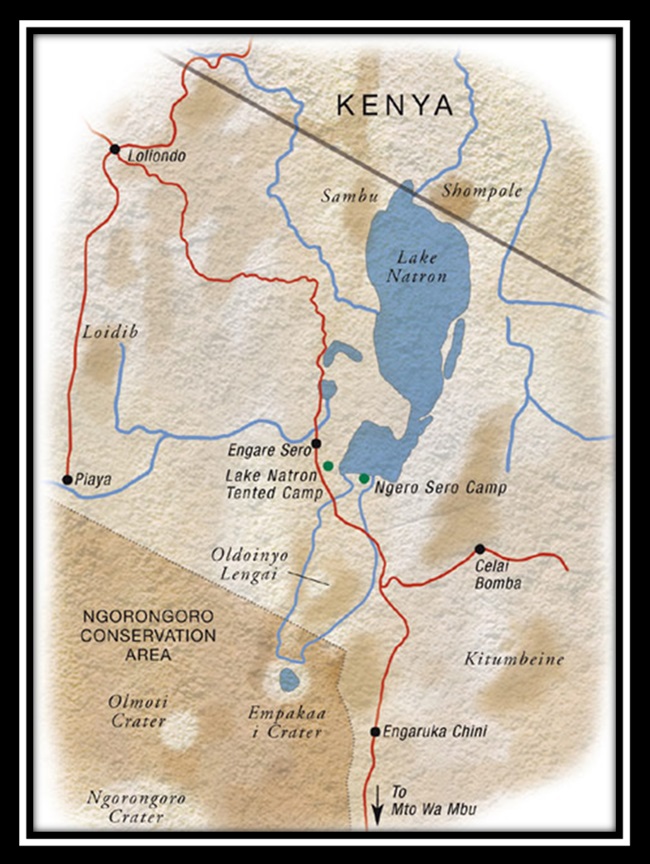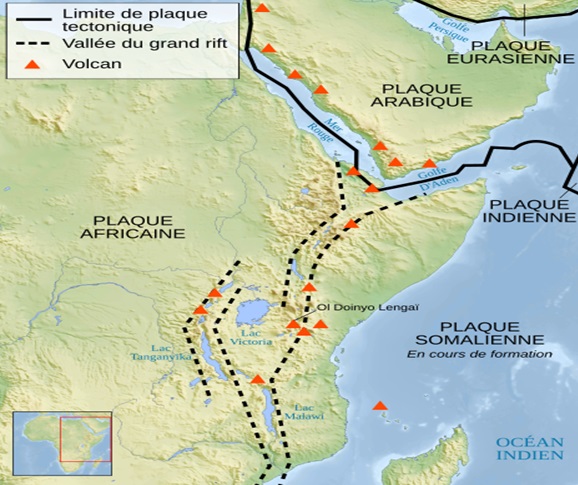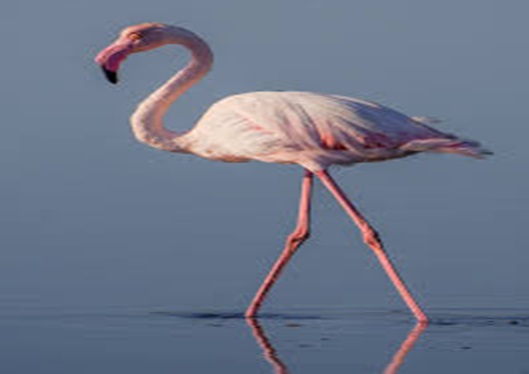(Preliminary Studies: Geography and Environmental Ecology)
(Main Exam, General Studies Paper- 3: Issues Related to Environmental Ecology) |
Reference
Millions of flamingos are facing danger due to climate change affecting the balance of Lake Natron in Tanzania.
About Lake Natron
- Location: On the Tanzania-Kenya border
- It is located in the Gregory Rift, the eastern branch of the East African Rift.
- Ramsar Site: Lake Natron Basin of Tanzania included in the Ramsar List in the year 2001
- Specialty: Lake Natron has a unique structure of hot water, salts, caustic soda and magnesite deposits.
- Environmental Importance: Only regular breeding area for the Lesser Flamingo of Africa
- However, this habitat is not protected and is threatened by planned development projects.

Causes of imbalance in Lake Natron
- Bad weather and encroachment
- Agriculture and infrastructure development
- Reduction in lake salinity due to frequent flooding
- Dangerous drop in water level due to prolonged dry weather
- Habitat disruption due to climate change as well as invasive plant species
Tips for Lake Conservation
- Actively emphasizing on conservation by involving the local community
- Ensuring conservation of nature by teaching pastoral communities about sustainable water practices
- Adopting broader global patterns
- Comprehensive and coordinated efforts are needed to save flamingos
- Conservationists need strict environmental regulations and increased public awareness
- A holistic approach is needed to protect birds etc.
- This includes preserving the habitat, controlling pollution and ensuring only sustainable development takes place around the lake.
Great Rift Valley
- The Great Rift Valley is a fault line that runs through part of East Africa.
- The valley is part of a larger structure called the East African Rift System. It runs from the northeastern to the southern parts of the continent in East Africa.
- The Great Rift Valley was formed by the movement of different tectonic plates associated with the African Plate.
- The African Plate is splitting into two parts: the Nubian Plate in the west and the Somali Plate in the east.
- This process of splitting, known as ‘rifting’, began in the Miocene era, about 25 to 30 million years ago.
- The Great Rift Valley starts from Ethiopia in the north and extends south to Mozambique. It is one of the most extensive rifts on the Earth's surface.
- The East African Rift and Great Rift Valley span across several countries: Eritrea, Djibouti, Ethiopia, Kenya, Tanzania, Uganda, Rwanda, Burundi, Democratic Republic of Congo (DRC), Malawi, Zambia and Mozambique.
- Africa's Great Rift Valley is home to some of the world's most dangerous lakes. Lake Natron in Tanzania and Lake Bogoria in Kenya are prominent among them. These lakes are hostile to most forms of life as their surface temperatures reach 40 degrees Celsius. However, they are ideal habitats for flamingos.

About Lesser Flamingo
- Physical Structure: The smallest species of Flamingo
- The body colour is light pink and the legs and beak are dark red.
- The Greater Flamingo is the state bird of Gujarat.

- Class: Birds (Aves)
- Scientific name: Phoeniconaias minor
- Conservation status :
- IUCN : Near Threatened (NT)
- CITES : Appendix II
- Lifespan: About 50 years
- Diet pattern: Generally vegetarian
- Lesser Flamingos eat mostly blue-green algae but also occasionally eat crustaceans and small insects.
- Threats: Climate change; agricultural, industrial and infrastructure development; human disturbance and water pollution from heavy metals and pesticides etc.
- Distribution area: Mainly eastern and southern Africa; Madagascar, Yemen, Pakistan and western India
|



